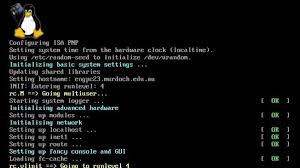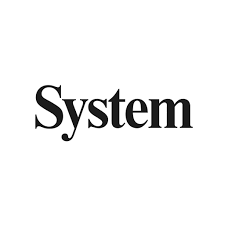Exploring the Security Benefits of Hardened Linux Distributions
The Power of Hardened Linux Distributions
Linux distributions come in various flavours, each catering to different needs and preferences. One category that stands out for its emphasis on security and robustness is hardened Linux distributions.
What are Hardened Linux Distributions?
Hardened Linux distributions are specialised versions of the popular open-source operating system that place a strong focus on security features and mechanisms. These distributions are designed to resist attacks and intrusions, making them ideal for environments where data protection and system integrity are paramount.
Key Features of Hardened Linux Distributions
- Enhanced Security Measures: Hardened Linux distributions implement a range of security enhancements, such as mandatory access controls, secure boot mechanisms, and rigorous auditing capabilities.
- Sandboxing and Isolation: These distributions utilise containerisation technologies to isolate processes and applications, reducing the risk of privilege escalation and limiting the impact of potential vulnerabilities.
- Ongoing Security Updates: Regular updates and patches are crucial in maintaining the security of any operating system. Hardened Linux distributions prioritise timely security updates to address emerging threats.
- Minimal Attack Surface: By stripping down unnecessary components and services, hardened Linux distributions reduce the potential attack surface available to malicious actors, enhancing overall system security.
Popular Hardened Linux Distributions
Some well-known hardened Linux distributions include:
- Selinux: Developed by the National Security Agency (NSA), Security-Enhanced Linux (SELinux) provides strong mandatory access controls for enhanced security.
- AppArmor: AppArmor focuses on application-level security policies to restrict programs’ capabilities based on defined profiles.
- Qubes OS: Qubes OS utilises virtualisation to create isolated compartments called “qubes” for enhanced security through compartmentalisation.
The Importance of Choosing a Secure Operating System
In an increasingly interconnected world where cyber threats are ever-present, selecting a secure operating system is crucial for safeguarding sensitive data and ensuring the integrity of your systems. Hardened Linux distributions offer a robust foundation for building secure environments that can withstand sophisticated attacks.
Top 8 Advantages of Using a Hardened Linux Distribution for Maximum Security
- Enhanced security features protect against cyber threats
- Mandatory access controls add an extra layer of protection
- Reduced attack surface minimises vulnerabilities
- Regular security updates ensure ongoing protection
- Sandboxing and isolation prevent privilege escalation
- Strong focus on data integrity and system resilience
- Advanced auditing capabilities for monitoring system activity
- Ideal for environments requiring high levels of security
Challenges of Using Hardened Linux Distributions: Key Drawbacks to Consider
- Steep Learning Curve
- Compatibility Issues
- Resource Intensive
- Limited Software Support
- Complex Configuration
- Reduced Flexibility
- Potential False Positives
Enhanced security features protect against cyber threats
Hardened Linux distributions offer enhanced security features that serve as a formidable defence against a wide range of cyber threats. By implementing robust security mechanisms such as mandatory access controls, secure boot protocols, and stringent auditing capabilities, these distributions create a fortified environment that can withstand malicious attacks and intrusions. The proactive approach to security taken by hardened Linux distros not only safeguards sensitive data but also instils confidence in users that their systems are well-protected against evolving cyber threats.
Mandatory access controls add an extra layer of protection
Mandatory access controls are a key feature of hardened Linux distributions that significantly enhance security by adding an extra layer of protection. By enforcing strict access policies and permissions at the kernel level, mandatory access controls limit the actions that users and processes can perform, reducing the risk of unauthorised access and potential security breaches. This proactive approach helps to prevent malicious activities and fortify the system against external threats, making hardened Linux distributions a reliable choice for environments where data protection is paramount.
Reduced attack surface minimises vulnerabilities
One significant advantage of using a hardened Linux distribution is the reduction of the attack surface, which effectively minimises vulnerabilities within the system. By eliminating unnecessary components and services that could potentially be exploited by malicious actors, hardened Linux distributions create a more secure environment where the risk of cyber threats and attacks is significantly lowered. This proactive approach to limiting the attack surface enhances overall system security and helps to protect sensitive data from potential breaches.
Regular security updates ensure ongoing protection
Regular security updates are a fundamental advantage of hardened Linux distributions, providing users with ongoing protection against evolving cyber threats. By prioritising timely updates and patches, these distributions proactively address vulnerabilities and bolster system security. This proactive approach helps to mitigate the risk of potential exploits and ensures that the operating system remains resilient in the face of emerging security challenges. Users can have peace of mind knowing that their hardened Linux distribution is equipped with the latest defences to safeguard their data and maintain the integrity of their systems.
Sandboxing and isolation prevent privilege escalation
Sandboxing and isolation are key features of hardened Linux distributions that play a vital role in preventing privilege escalation. By utilising containerisation technologies, these distributions create isolated environments for processes and applications, effectively limiting their access to system resources. This containment reduces the risk of malicious actors exploiting vulnerabilities to gain elevated privileges within the system. By confining each process to its own sandboxed environment, hardened Linux distributions significantly enhance security by thwarting attempts at privilege escalation and maintaining the integrity of the overall system.
Strong focus on data integrity and system resilience
Hardened Linux distributions place a strong emphasis on data integrity and system resilience, ensuring that critical information remains secure and systems remain operational even in the face of potential threats. By implementing robust security measures and mechanisms, such as mandatory access controls and secure boot processes, these distributions work tirelessly to protect data from unauthorised access or modification. Additionally, the focus on system resilience means that hardened Linux distributions are designed to withstand attacks and recover quickly from any potential breaches, providing users with a reliable and secure computing environment for their sensitive data and critical operations.
Advanced auditing capabilities for monitoring system activity
Hardened Linux distributions offer advanced auditing capabilities that provide unparalleled insight into system activity, making them a valuable asset for security-conscious users and organisations. By meticulously monitoring and logging system events, these distributions enable administrators to track user actions, identify potential security breaches, and investigate suspicious activities in real-time. The detailed audit logs generated by hardened Linux distros not only enhance threat detection and incident response but also facilitate compliance with regulatory requirements by providing a comprehensive record of system interactions.
Ideal for environments requiring high levels of security
Hardened Linux distributions are the ideal choice for environments that demand high levels of security. With their advanced security features and robust mechanisms, these specialised operating systems provide a fortified defence against potential threats and intrusions. From government agencies and financial institutions to critical infrastructure and sensitive data centres, hardened Linux distributions offer a secure foundation that instils confidence in the protection of valuable assets and sensitive information.
Steep Learning Curve
Steep Learning Curve: Embracing hardened Linux distributions can present a challenge for users who are not well-versed in complex system configurations. The advanced security features inherent in these distributions demand a higher level of technical expertise to effectively set up and manage. From configuring mandatory access controls to understanding intricate sandboxing mechanisms, users may encounter a steep learning curve when navigating the intricacies of hardened Linux distributions. However, with dedication and a willingness to learn, users can harness the enhanced security capabilities offered by these distributions to fortify their systems against potential threats.
Compatibility Issues
One significant drawback of hardened Linux distributions is the potential for compatibility issues. Due to the stringent security measures and custom configurations implemented in these distributions, some applications or hardware devices may not function optimally or be fully compatible. This can result in usability challenges for users who rely on specific software or hardware that may not seamlessly integrate with the hardened environment. Addressing compatibility issues becomes crucial to ensure a smooth user experience and maximise the benefits of enhanced security features offered by hardened Linux distributions.
Resource Intensive
One notable drawback of hardened Linux distributions is their resource-intensive nature. The implementation of additional security layers and mechanisms, while crucial for bolstering system security, can lead to increased consumption of system resources. This heightened demand may result in decreased performance, particularly on older or less powerful hardware configurations. Users with limited computing resources may find that the trade-off between enhanced security and system performance poses a challenge when opting for a hardened Linux distribution.
Limited Software Support
One notable drawback of hardened Linux distributions is the limited software support they may offer. Due to their focus on security and stringent system requirements, certain software packages or third-party applications may not be readily available or optimised for use with these specialised distributions. This can pose a challenge for users who rely on specific tools or applications that are not compatible with the security measures implemented in hardened Linux environments, potentially limiting their flexibility and usability. Users may need to explore alternative solutions or workarounds to address this issue effectively.
Complex Configuration
One notable drawback of hardened Linux distributions is the complexity involved in configuring their security settings. This process can be daunting and time-consuming, particularly for users who are not well-versed in security concepts. Fine-tuning the various security features and mechanisms of a hardened Linux distribution requires a good understanding of how they work and interact with each other. As a result, users may find themselves grappling with intricate configurations that demand careful attention to detail, potentially posing a challenge for those seeking a more straightforward user experience.
Reduced Flexibility
One notable drawback of hardened Linux distributions is the reduced flexibility they offer to users. While the stringent security measures embedded in these distributions provide a robust defence against cyber threats, they may also restrict certain functionalities and customisation options that are commonly found in mainstream Linux distributions. Users who value extensive customisation capabilities or require specific software configurations may find their options limited when using a hardened distribution. Balancing security with flexibility becomes a key consideration for individuals or organisations seeking to deploy a hardened Linux system.
Potential False Positives
In hardened Linux distributions, one notable drawback is the potential for false positives due to overly aggressive security controls. While the stringent security measures are intended to fortify the system against threats, they may sometimes misinterpret legitimate actions as suspicious activities. This can result in false positive alerts being triggered, causing inconvenience and frustration for users who may find themselves restricted or interrupted in their normal operations. Striking a balance between robust security measures and minimising false positives is essential to ensure a smooth and user-friendly experience within a hardened Linux environment.












